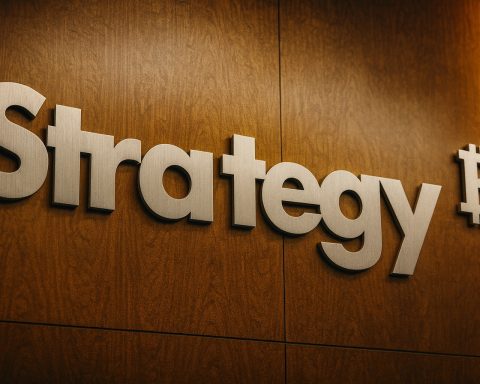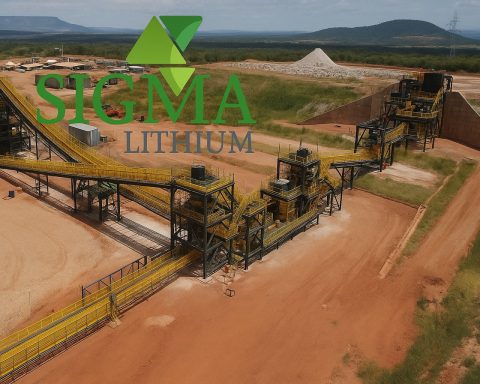DroneShield Ltd (ASX: DRO), the Australian counter‑drone specialist, has just been through one of the wildest weeks in its stock‑market history. On Monday, 17 November 2025, investors are trying to decide whether the stock is a rare buying opportunity or a textbook governance disaster.
Key facts at a glance
- Share price today: Around A$2.60 on the ASX in early Monday trade, up more than 11% on the day and roughly €1.55–1.60 on German venues such as Lang & Schwarz and Tradegate. [1]
- Crash last week: DroneShield fell about 31–32% on Thursday, 13 November, its steepest one‑day drop ever and the worst performer in the S&P/ASX 200 that day. [2]
- Trigger: Top executives, including CEO Oleg Vornik, the chair and a non‑executive director, sold about A$66–67 million worth of stock after a wave of new share issuance and a bungled contract announcement. [3]
- Fundamentals: Despite the chaos, DroneShield is reporting quadruple‑digit revenue growth, positive cash flow and a multi‑billion‑dollar sales pipeline – but still trades on rich valuation multiples. [4]
What DroneShield actually does
DroneShield develops hardware and software to detect, track and defeat drones, serving military, security and critical‑infrastructure clients in more than 70 countries. [5]
Its systems combine sensors, AI‑driven signal processing and jamming capabilities to protect bases, borders and events from hostile or rogue unmanned aerial vehicles – a market that has exploded as drones become both cheaper and more dangerous.
That booming niche explains why DroneShield had become one of the poster children of Australia’s small‑cap defence tech rally before last week’s crash. [6]
How the DroneShield share price collapsed
1. A “new” US contract that wasn’t
The current crisis started on 10 November 2025:
- DroneShield told the market it had secured A$7.6 million in new US government contracts for handheld systems, with deliveries expected through late 2025 and early 2026. [7]
- The announcement initially sent the shares sharply higher – local coverage estimates an 8–9% intraday jumpbefore trading was paused. TechStock²
By lunchtime, however, the company withdrew the announcement, admitting the deals did not represent new business but were reissues of already‑announced orders triggered by regulatory changes. Management blamed an “administrative error” and promised tighter disclosure processes. [8]
German outlets such as finanzen.net and DER AKTIONÄR highlighted this as a serious communications misstep that shook confidence in DroneShield’s order reporting and contributed to a sense that the stock had become a one‑way speculative bet. [9]
2. A wall of new shares and massive insider selling
The contract U‑turn landed just days after 31.16 million new shares hit the market on 6 November, following the vesting of performance rights and options tied to a A$200 million revenue milestone. These shares involved no fresh capital raised but significantly diluted existing holders. TechStock²
Then came the real shock:
- CEO Oleg Vornik sold about A$49.5 million worth of shares – essentially his entire holding of ordinary stock. [10]
- Chair Peter James and director Jethro Marks offloaded roughly A$17 million combined. [11]
- In total, media tallies across Reuters and local business press put the selldown at around A$66–67 million. [12]
DER AKTIONÄR reports that the three executives now mainly hold performance shares and options, not regular shares, making the sale look like a near‑total cash‑out at the end of a parabolic rally. [13]
3. Thursday’s “falling knife” – the 31–32% crash
As the insider trades became public via ASX notices after the market close, investors rushed for the exit:
- On Thursday, 13 November, DroneShield fell about 31–34% to A$2.25, becoming the top loser on the S&P/ASX 200 and wiping out close to A$1 billion in market value in a single session. [14]
- Economic Times described volumes and price action as having all the hallmarks of a “falling knife”, with heavy selling in the first 20 minutes of trade. [15]
- German and Austrian outlets talk of the “brutalster Crash seit Monaten” and a stock that has been “shot down on the exchange”. [16]
On Friday, 14 November, the ASX price staged a small rebound to around A$2.33, up roughly 3.5% on the day but still far below early‑November levels. [17]
European quotes painted a similar picture: the share briefly slipped towards €1.25 on Thursday before clawing back to around €1.43 on Friday – what some commentators called a comeback “on a very low level”. [18]
What is new today – 17 November 2025
1. Finanztrends: “Unspeakable” outlook and a market cap still in the billions
German site Finanztrends published a widely shared piece this morning titled “DroneShield-Aktie: Unsagbare Prognose!” (“Unspeakable forecast”). [19]
Key points from that article:
- Friday’s roughly 10% bounce in euro trading is framed as a typical counter‑move after a crash, not proof of a turnaround. [20]
- The author argues that technical indicators (50/100/200‑day moving averages) now point clearly downward, signalling an intact downtrend despite short‑term rallies. [21]
- Even after the sell‑off, DroneShield’s market value is put at about €1.19 billion, against estimated annual revenue of ~€120 million and possible net profit of €20–30 million – implying a still demanding valuation. [22]
- The verdict: the stock is dominated by speculators on both sides, with downside scenarios (like a slide toward €1.00) still firmly on the table. [23]
2. International defence media: a cautionary tale
Defence‑focused outlet SSBCrack News summarised the episode under the headline “DroneShield Shares Plummet 32% After Executives’ Stock Sell‑Off”. [24]
Its take:
- The roughly 32% plunge is estimated to have wiped out around US$1 billion in market capitalisation. [25]
- The article stresses that, while the insider sales were legal, they raise serious questions about management’s confidence in the company’s future – and illustrate how fast sentiment can flip in high‑growth tech stocks. [26]
3. Australia’s house broker turns cold
The Australian Financial Review reports that DroneShield’s own house broker has effectively turned on the stock after last week’s events, describing it as “dead money” for now and signalling that investor interest may be “killed” until governance worries ease. [27]
Combined with a separate AFR piece highlighting 17 “red flags” identified by a short‑selling hedge fund, this underscores how firmly the debate has swung from growth to governance. [28]
4. Governance storm: calls to change trading rules
The fallout is extending beyond DroneShield itself. In an ABC “The Business” segment broadcast today, governance experts called for changes to ASX trading rules, including a cool‑off period during which directors cannot sell shares immediately after market announcements. [29]
If such reforms gain traction, DroneShield could end up being cited for years as the case study that triggered stricter rules around director dealing and disclosure timing.
5. Insider trades under the microscope
Australian platform MarketIndex lists DroneShield among the week’s most notable insider‑trade stories, pointing out that large shareholders were “caught selling” in the same window as the sell‑off, adding another layer of scrutiny to the name. [30]
Fundamentals vs. trust: two very different stories
Explosive growth in revenue and pipeline
On the business side, the numbers remain impressive:
- Q3 2025 revenue: about A$92.9 million, up more than 1,000% year‑on‑year.
- Cash receipts: roughly A$77 million for the quarter, flipping the company to solid positive operating cash flow. [31]
- First nine months of 2025: around A$165 million in revenue, more than quadruple 2024 levels, and the most profitable period in the company’s history. TechStock²
- Pipeline: approximately A$2.5 billion in prospective business across 300+ projects worldwide. TechStock²
DroneShield is also investing heavily in capacity, planning to lift potential annual production from about A$500 million to A$2.4 billion by late 2026, and funding a new R&D facility in Adelaide focused on electronic warfare technologies. TechStock²
But a very rich valuation
Analyst and data platforms estimate that for the 2025–2027 period:
- Revenue could rise from roughly A$213 million to A$300+ million.
- Earnings per share are expected to grow rapidly – but the forward P/E multiple is still in the mid‑double‑digits, even after the crash. [32]
German and Australian analyst round‑ups still show average price targets around A$5–5.5, implying 100%+ upside from current levels – but those models assume that growth continues and that the governance overhang gradually fades. [33]
That gap between bullish spreadsheets and shaken real‑world sentiment is exactly why the stock is now so volatile.
Where the share price stands now
By late morning on Monday, 17 November 2025:
- On the ASX, DroneShield is quoted around A$2.60, up over 11% compared with the previous close, with tens of millions of shares changing hands. [34]
- On German trading platforms such as Lang & Schwarz (L&S RT) and Tradegate, the price sits in the €1.55–1.60range, up roughly 10–12% on the day. [35]
Even after last week’s rout, however, the stock is still up roughly 190–200% over 12 months, thanks to a massive rally earlier in the year. [36]
For long‑term holders, that means two things can be true at once:
- The recent fall has been brutal.
- The share price is still far above where it started 2025.
Why investors feel blindsided
Across German, Australian and international coverage, several themes keep appearing:
- Timing and optics of the insider sales
Executives sold just days after performance rights vested and almost immediately after the controversial “new” contract announcement. Even though the company insists the trades were not based on undisclosed information, many fund managers and retail investors see the timing as a vote of no confidence in the short‑term share price. [37] - Repeated communication issues
The A$7.6m contract mix‑up came on top of a series of earlier high‑octane announcements and capital moves, followed by corrections or clarifications. Finanzen.net points out that investors have endured multiple “Kommunikationspannen” (communication blunders) in just a few weeks. [38] - Growing governance worries
Australian business media have also flagged more subtle concerns, such as concentrated director selling over several years and even personal financial ties between board members and the CEO, which – while not suggesting illegality – raise questions about independence and incentives. TechStock² - Technical damage
Chart‑focused commentators note that the stock has crashed through important moving averages – including the 200‑day line – and now trades with extremely wide daily ranges, making it a “very high risk” trading vehicleeven for experienced speculators. [39]
What to watch next
For investors following DroneShield from here, coverage today and over the weekend points to a few key questions:
- Can management rebuild trust?
Markets will look for clearer communication around director trading plans, governance changes and how future contracts will be disclosed to avoid another A$7.6m‑style misstep. TechStock²+1 - Will regulators or the ASX tighten rules?
If proposals for cooling‑off periods on director sales gain momentum, it could change how founder‑led growth companies manage incentives and liquidity, well beyond DroneShield. [40] - Do large institutions buy the dip – or keep selling?
Additional substantial‑holder notices or public comments from big funds could either stabilise sentiment or deepen the rout. TechStock²+1 - Can the company keep converting its pipeline?
For the bullish case to re‑assert itself, DroneShield needs to keep turning its multi‑billion‑dollar pipeline into cash‑generating contracts without further communication drama. TechStock²
Bottom line: high‑growth defence stock with a trust problem
DroneShield on 17 November 2025 is a paradox:
- Operationally, it’s delivering the kind of revenue growth and pipeline expansion most defence tech investors only dream about. [41]
- Financially, it still trades at valuation multiples that assume years of strong execution. [42]
- Governance‑wise, a combination of heavy insider selling and disclosure errors has left a deep scar on market confidence. [43]
Whether the DroneShield share price crash turns out to be a historic buying opportunity or an early warning of deeper issues will depend less on the next intraday swing and more on how the company now handles transparency, incentives and trust.
Important note
This article is journalistic information, not investment advice. It does not take into account your personal objectives, financial situation or needs. If you are considering buying or selling DroneShield shares (ASX: DRO), you should:
- Read the latest ASX announcements and company reports in full.
- Consult independent research or speak with a licensed financial adviser before making any investment decision.
References
1. www.comdirect.de, 2. m.economictimes.com, 3. www.deraktionaer.de, 4. www.finanzen.net, 5. m.economictimes.com, 6. www.aceinvestors.com.au, 7. www.finanzen.net, 8. www.finanzen.net, 9. www.finanzen.net, 10. www.deraktionaer.de, 11. www.deraktionaer.de, 12. m.economictimes.com, 13. www.deraktionaer.de, 14. m.economictimes.com, 15. m.economictimes.com, 16. www.finanzen.net, 17. www.finanzen.net, 18. www.boerse-express.com, 19. www.finanztrends.de, 20. www.finanztrends.de, 21. www.finanztrends.de, 22. www.finanztrends.de, 23. www.finanztrends.de, 24. news.ssbcrack.com, 25. news.ssbcrack.com, 26. news.ssbcrack.com, 27. www.afr.com, 28. www.afr.com, 29. www.abc.net.au, 30. www.marketindex.com.au, 31. www.finanzen.net, 32. www.finanzen.net, 33. www.finanzen.net, 34. www.comdirect.de, 35. www.boerse.de, 36. www.finanzen.net, 37. www.deraktionaer.de, 38. www.finanzen.net, 39. www.deraktionaer.de, 40. www.abc.net.au, 41. www.finanzen.net, 42. www.finanzen.net, 43. www.deraktionaer.de







![Plug Power (PLUG) Today: Q3 Results Set the Stage for a $275M Liquidity Pivot, Data‑Center Push, and Fresh Analyst Calls [Nov 11, 2025] Plug Power (PLUG) Today: Q3 Results Set the Stage for a $275M Liquidity Pivot, Data‑Center Push, and Fresh Analyst Calls [Nov 11, 2025]](https://ts2.tech/wp-content/uploads/2025/11/Plug-Power-Inc.-PLUG-1-1024x683.jpg)

